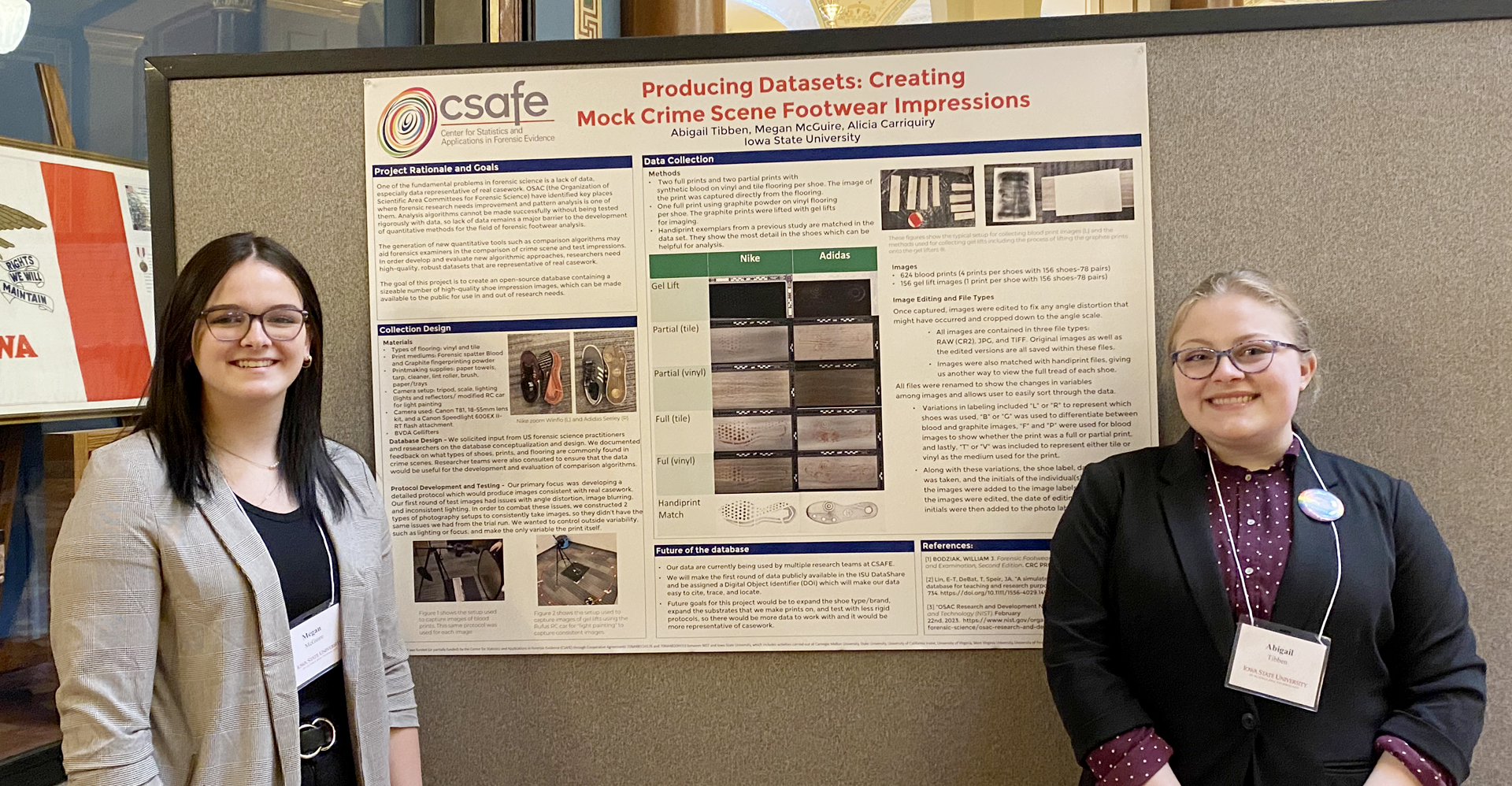Three Center for Statistics and Applications in Forensic Evidence (CSAFE) students presented research at the 2023 Research in the Capitol. The event was held March 6 at the Iowa State Capitol rotunda in Des Moines.
Abigail Tibben, a junior in genetics; Megan McGuire, a sophomore in criminal justice; and Emily Allen, a sophomore in statistics, were among 20 Iowa State University undergraduate students selected to display a poster and discuss their research projects with legislators, state officials and university administrators.
Tibben and McGuire co-presented “Producing Mock Crime Scene Footwear Impressions Dataset.” Their poster details their work on creating a publicly available database of high-quality images of shoe impressions that represent real forensic casework. They are mentored by Alicia Carriquiry, CSAFE director and Distinguished Professor and President’s Chair in Statistics at Iowa State. Below is the abstract for their poster:
One of the fundamental problems in forensic science is a lack of data. Creating datasets representative of casework is a challenge because it can be difficult to obtain large quantities of images collected under the same protocol and with the same shoes. Though, data collected in this way can be of significant use for researchers and training within forensic science disciplines. This project’s main objective is to create an open-source database containing a sizeable number of high-quality images of shoe impressions. The footwear team at the Center for Statistics and Applications in Forensic Evidence (CSAFE) worked to collect consistent, high-quality images that could be representative of those found at crime scenes and made publicly available to the broader forensic and research communities. With mixed impression types, flooring, lift techniques, and digital file types, the complete dataset includes nearly 800 shoeprint images contained in more than 1,700 digital files.
Allen presented “Forgery Detection Using Statistical Analysis.” Her research project aims to develop a statistical approach to differentiate a genuine signature from a forged one. Allen is mentored by Carriquiry and Danica Ommen, a CSAFE researcher and assistant professor of statistics at Iowa State. The abstract for her poster is below:
Can we tell whether a digitally captured signature is authentic or forged? To address this question, data is obtained with a software called MovAlyzeR® to capture aspects of a signature as it is written. The signatures are decomposed into strokes, and each stroke’s qualities are analyzed, including size, duration, velocity, jerk, and pressure. The statistical Hotelling’s T-Squared Test is used to compute test statistics for pairs of genuine and forged signature exemplars. The corresponding test statistics for the known genuine comparisons are used to approximate the known-match score distribution via kernel density estimation and similarly for the non-known-match distribution. For each new comparison, the test statistic is computed and compared to both reference distributions. The ratio of these values is the score-based likelihood ratio, a statistically based objective method for assessing the value of evidence towards forgery. This forgery-detecting method is critical as more signatures are written electronically over time.
Learn more about the student research opportunities available at CSAFE: https://forensicstats.org/learning/students/.





